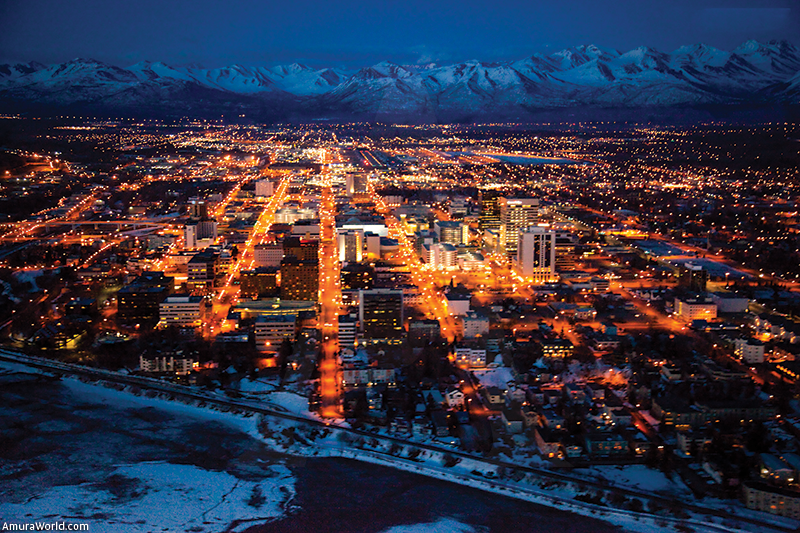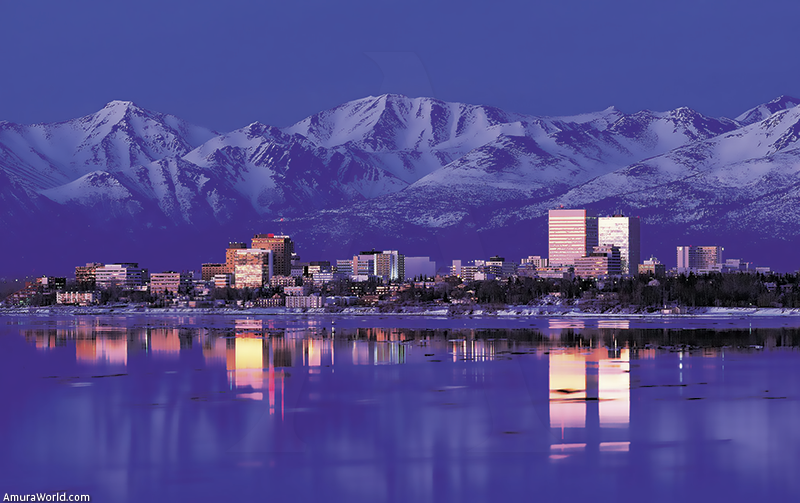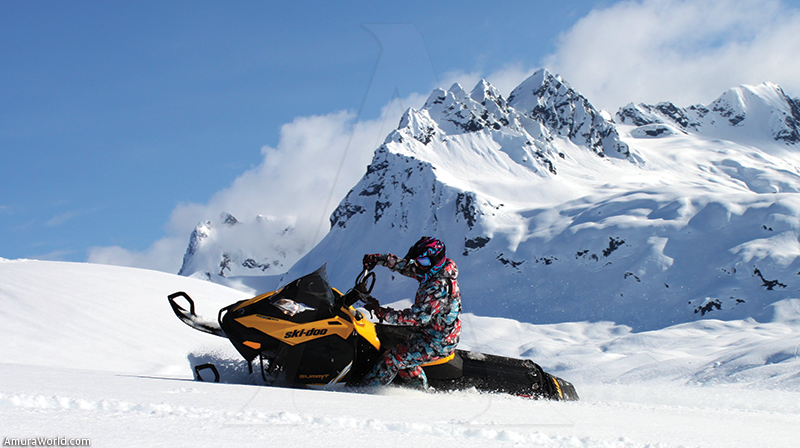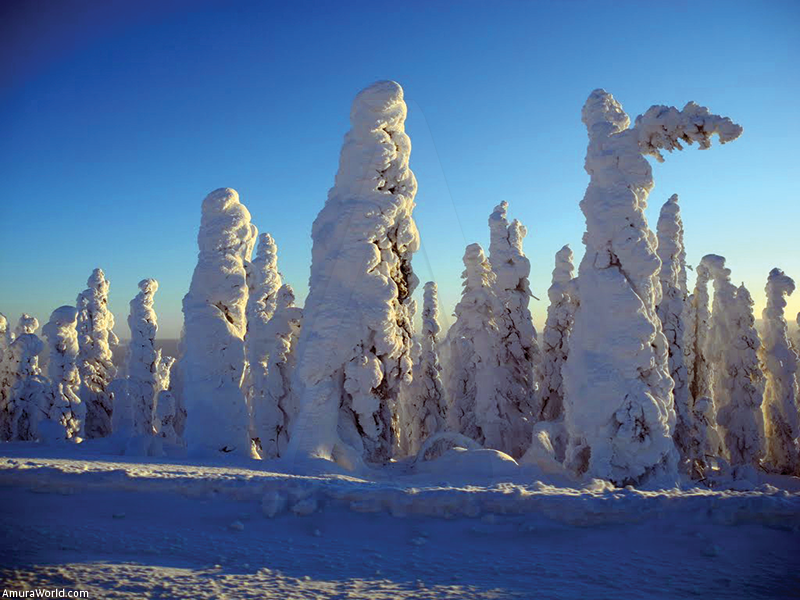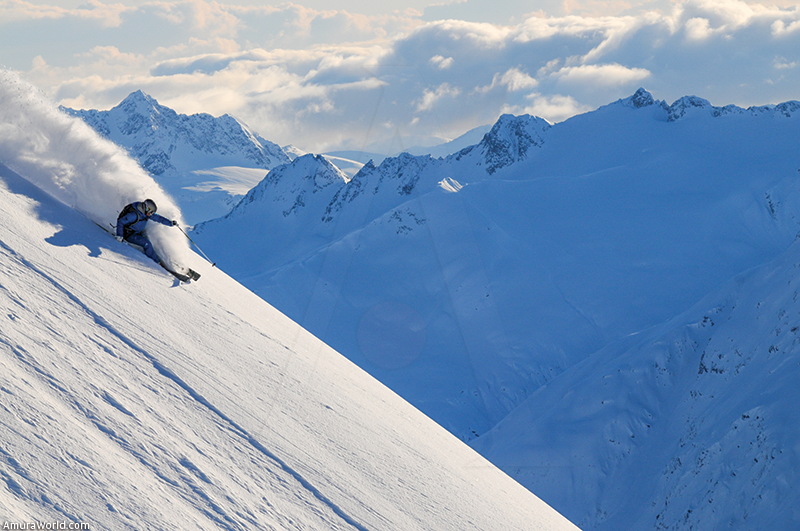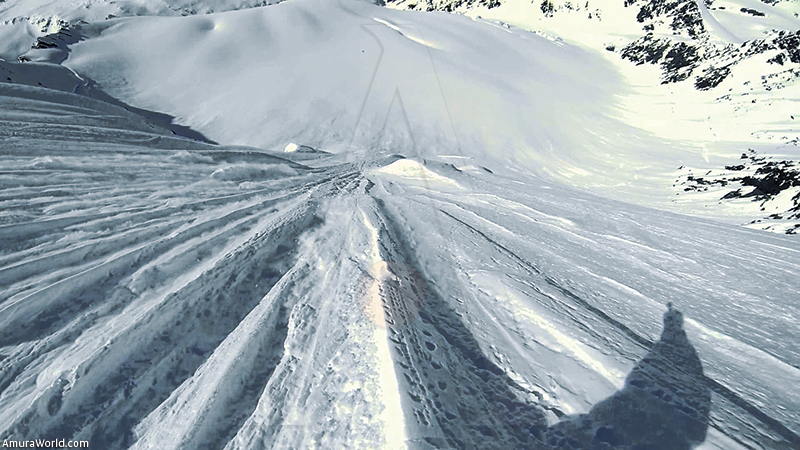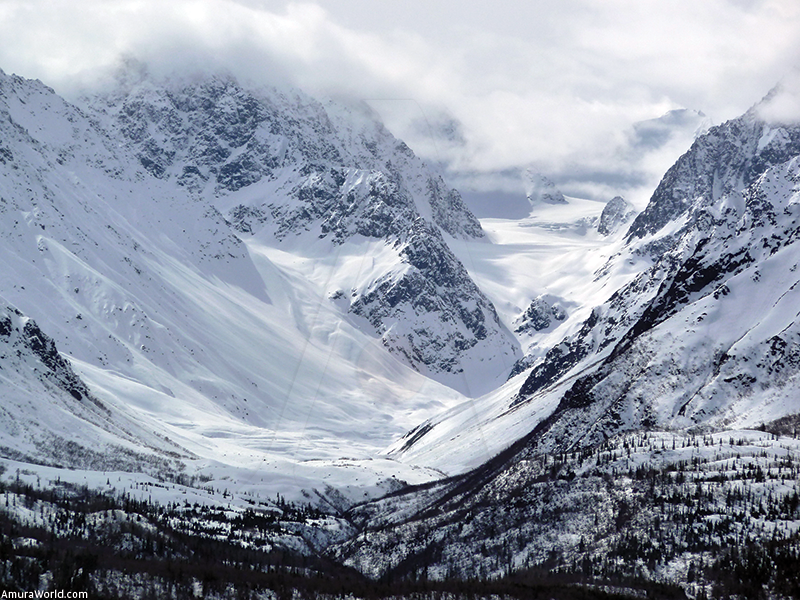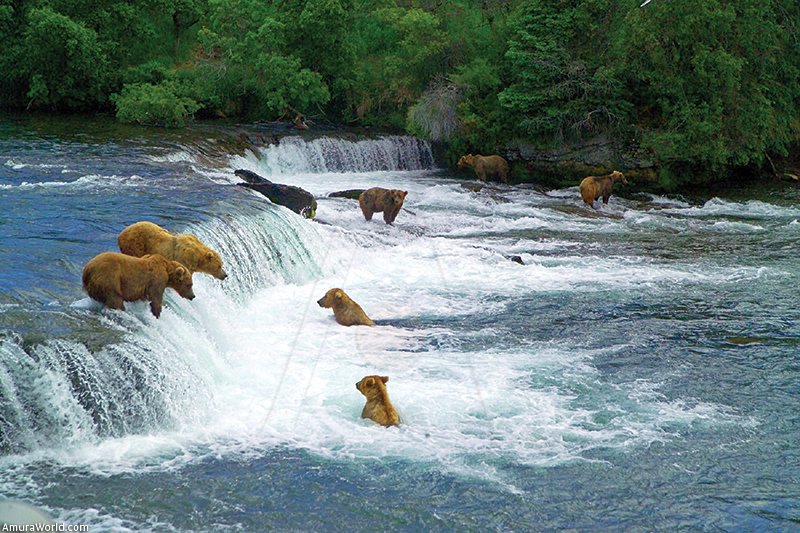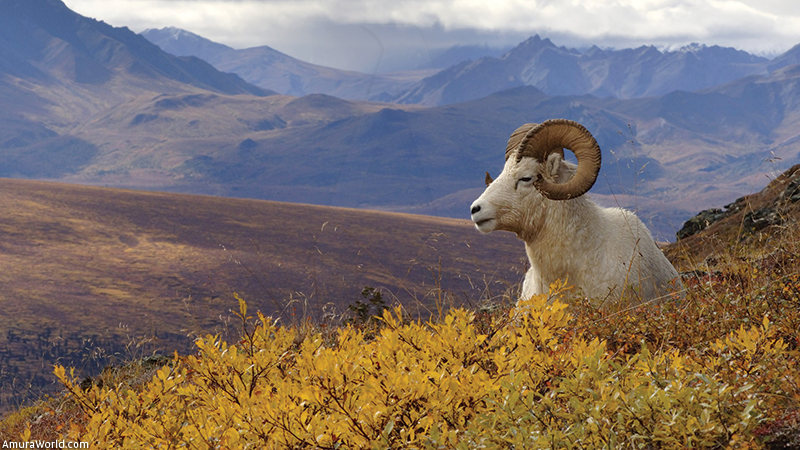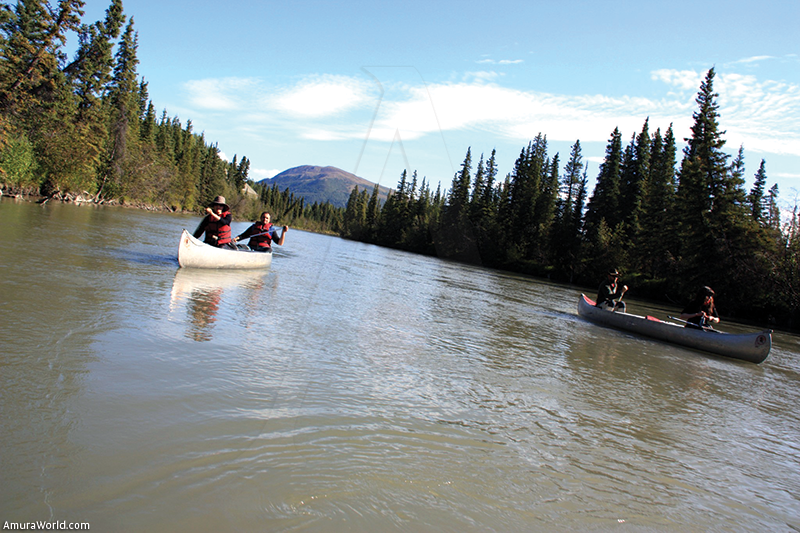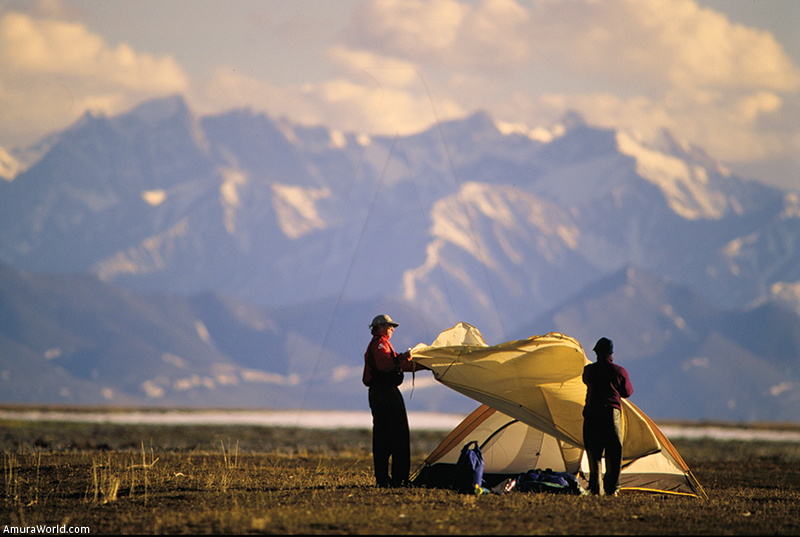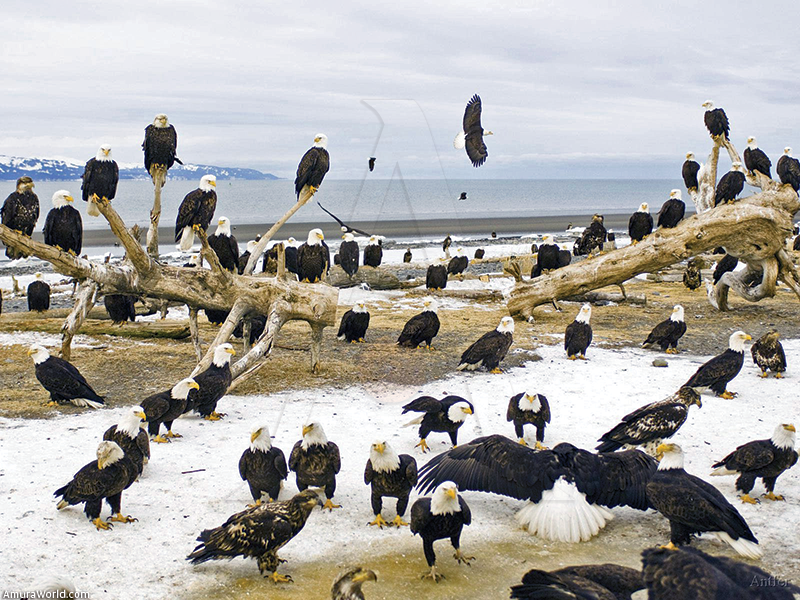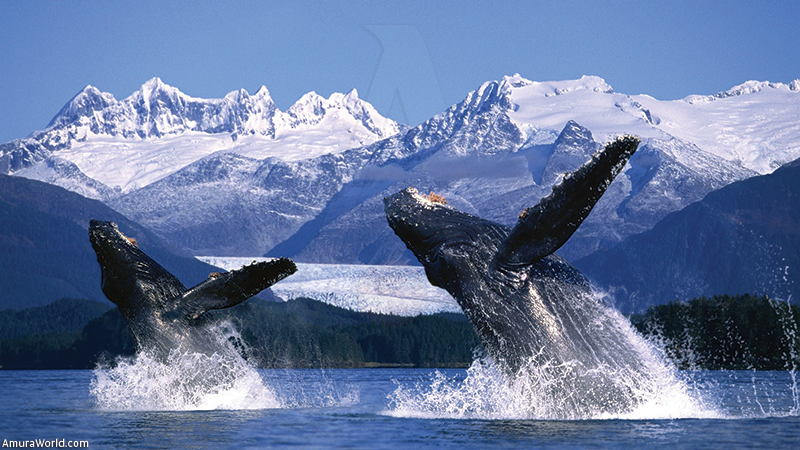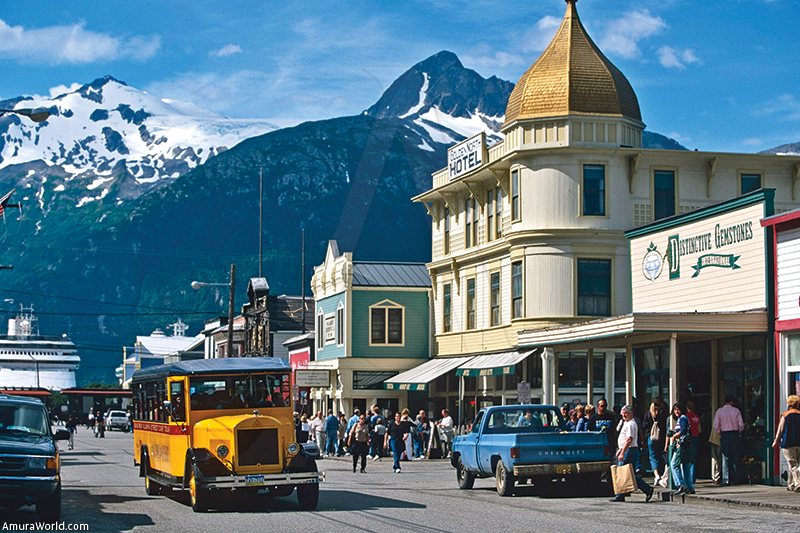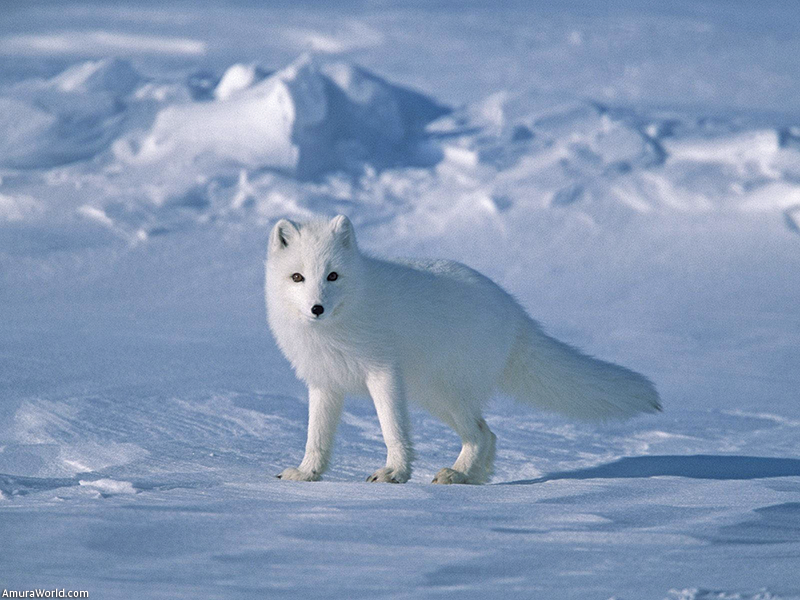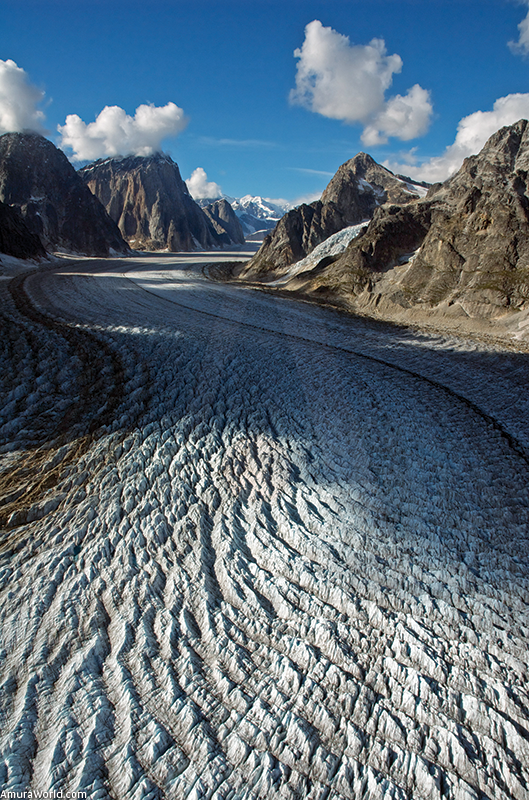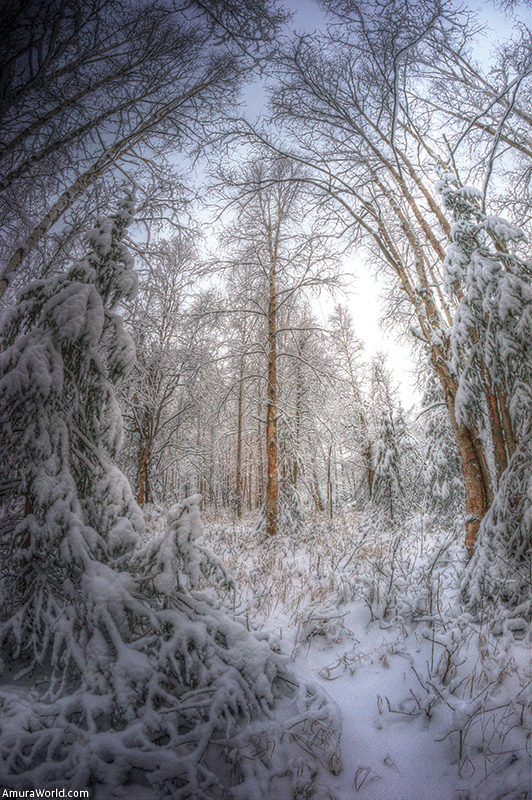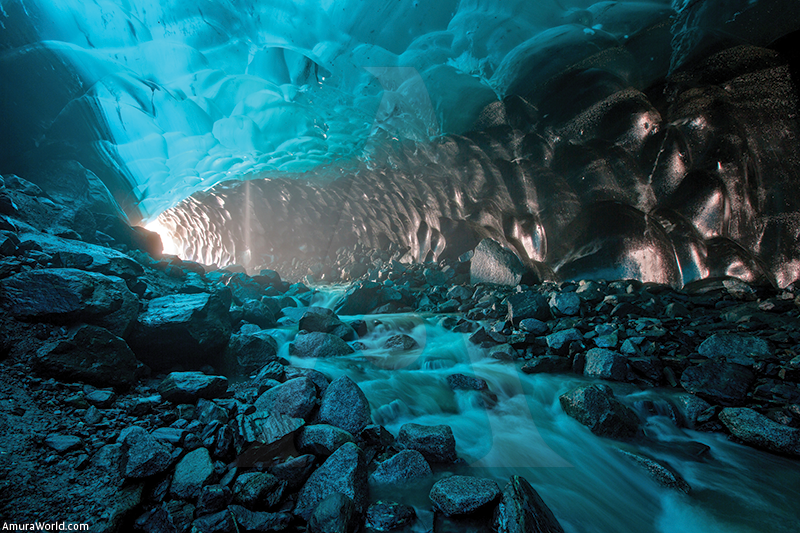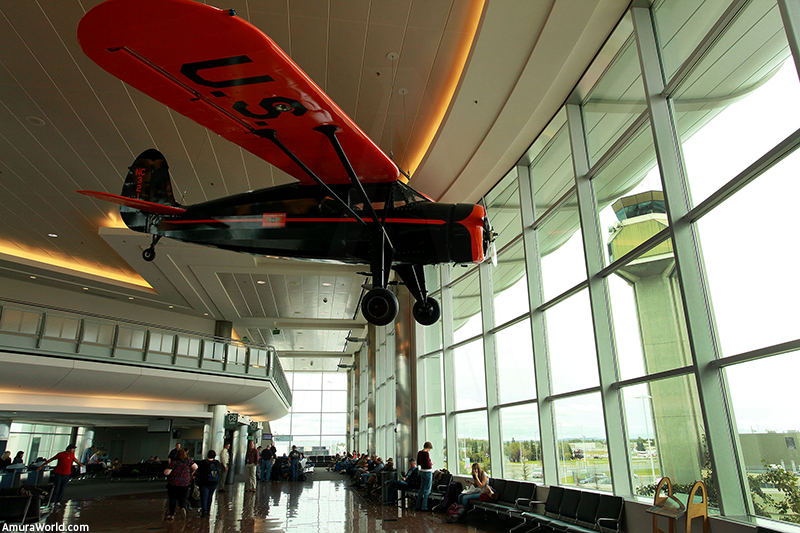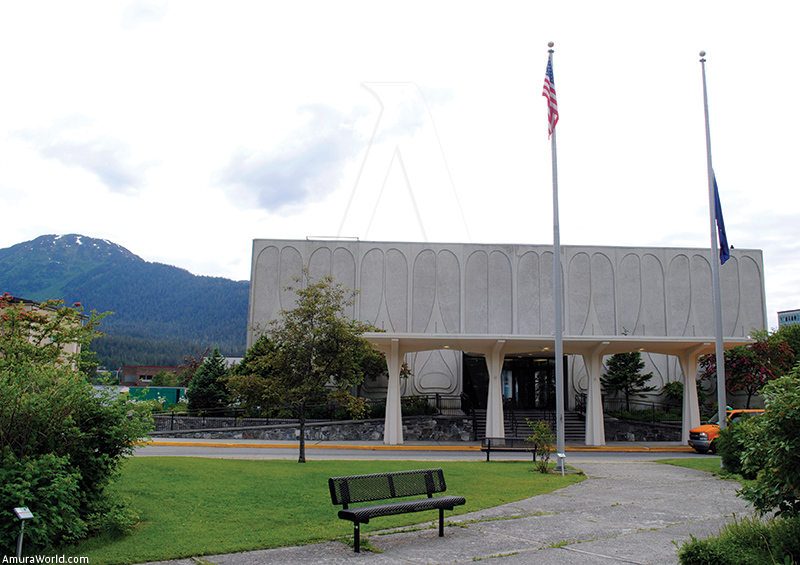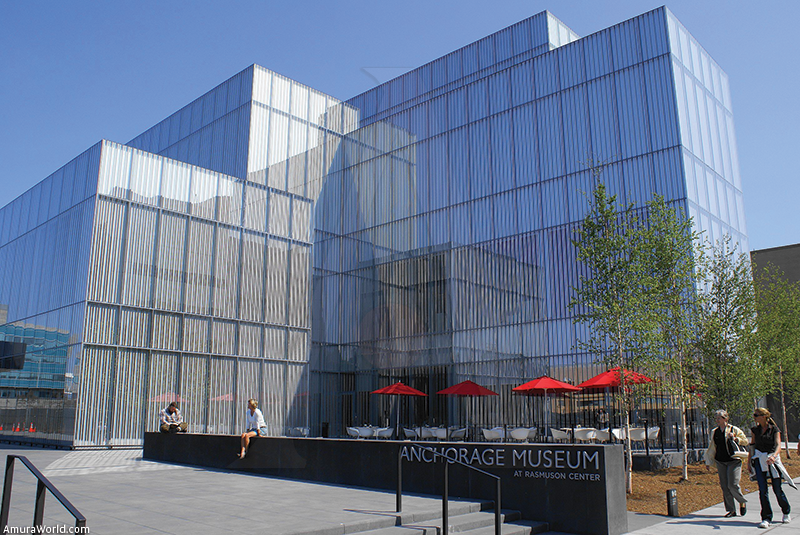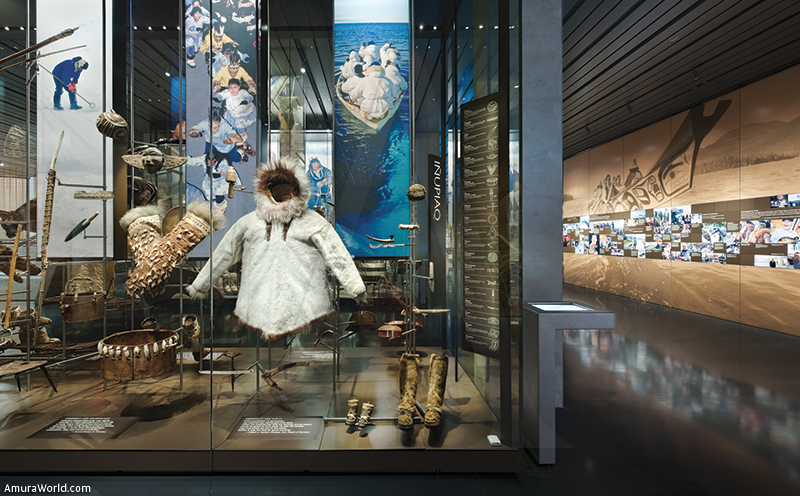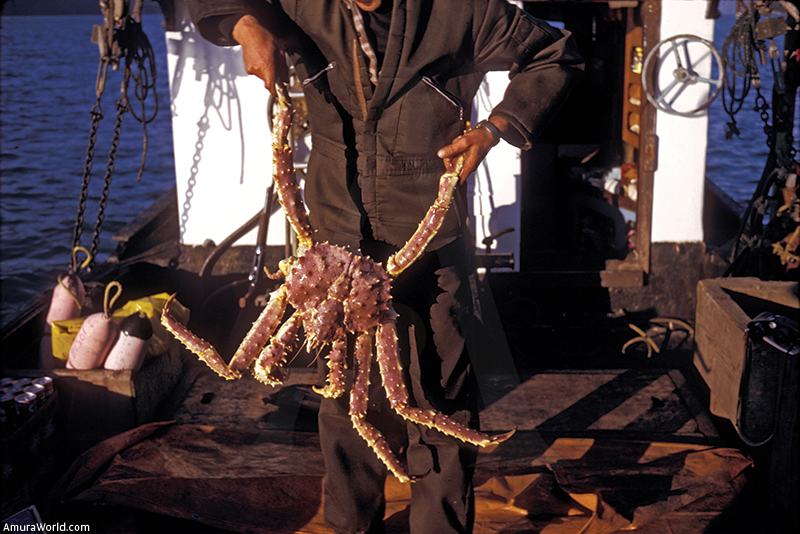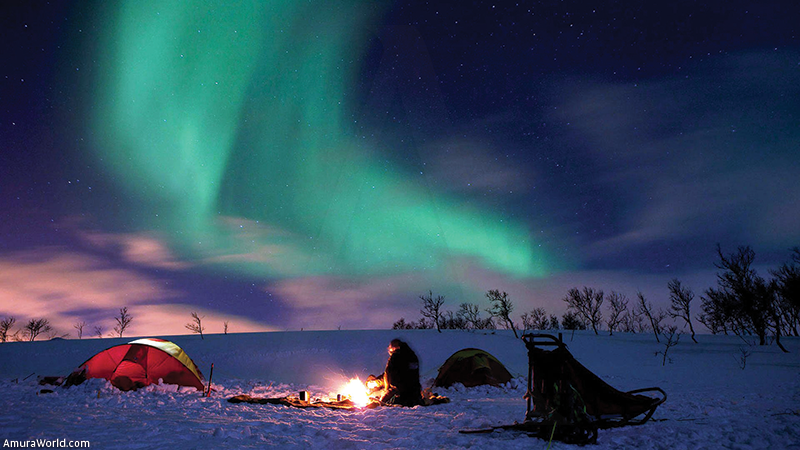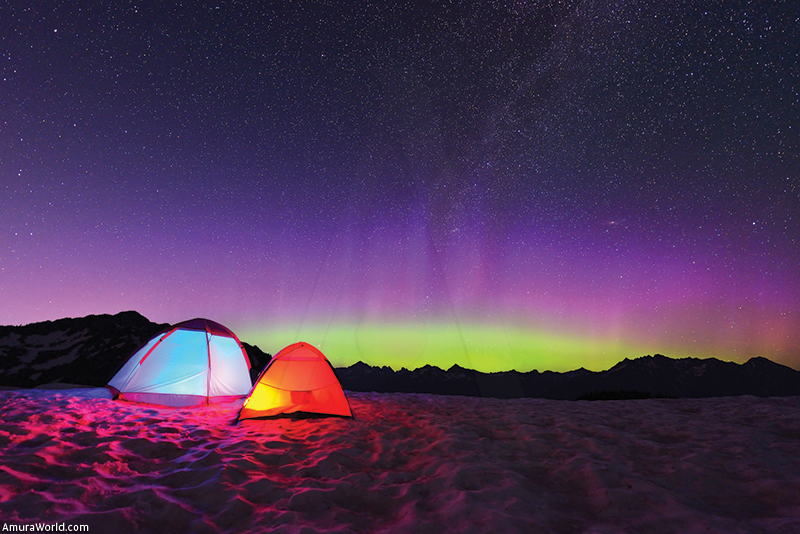A message to the world.
En 1914, two years after Alaska had become a US territory, a project was carefully presented by the Alaska Engineering Commission. From the beginning, it proposed the construction of an Alaska port and railroad. A year later, President Woodrow Wilson authorized the funds for their construction; in 1915 the port development and the building of the railroad started, the latter lasting until 1923, giving a great push to the just born city. The same year, the first lots of land sales began, and the Anchorage Chamber of Commerce was founded.
The 1920s set the trading course of the town and also its status as an independent city, thanks to the strength given by the railroad. A decade later, its growth went massive due to the advancement of aviation. Anchorage then became one of the centers with greater development which made vital the establishment of a military enclave. So, the Elmendorf Air Force Base and the Richardson Fort transformed Anchorage into a bulwark during World War II.
In the second half of the twentieth century, Anchorage achieved renown as a progressive city, significant to the US, specially after the discovery of its offshore oil wells. Nevertheless, it also overcame economic problems, the same as problems derived from natural phenomena, like the 9.2 degree Richter scale earthquake, on March 27, 1964, that shook it for five minutes, leaving 115 people dead and damages for $311 million dollars (equivalent to $2,300 million dollars, present value.)
All in all, at present, Anchorage is distinguished as one of the best vacation centers of all; for it offers something for everyone, incredible skiing centers, adventures, cruises, wild life and the best Auroras Borealis ever enjoyable in an urban center with all service facilities.
A memorable celebration
In 2013, Anchorage, the largest city of Alaska, began celebrating the centenary of its foundation with all kinds of festivities present in museum exhibitions the same as in the streets.
Founded in 1913, in its origins it was a tent town; that it sheltered the construction workers wich laid the Alaska Railroad tracks; that is way, it was known as “Tent City.” However, its workers displayed their regional identity and decided to establish a urban logistics center, because of its central location. That is how in 1915, it was formally chartered as a city and, since that time, it has passed from having a few thousand construction workers to reaching 300,000 inhabitants. In the same tenor, the city also commemorates the 90th anniversary of the Alaska Railroad construction completion, when President Warren G. Harding hammered the ceremonial golden nail; which marked the last part of the track connecting the northern extreme of the railroad with Anchorage. These festivities will culminate this year, when the 100th anniversary of the city is formally celebrated.
However, the party will not be over, still the citizens are getting ready to commemorate the 1867 Treaty with Russia for the Purchase of Alaska by the United States; almost 150 years ago. This celebration will be held on October 18, Alaska Day, 2017.
Rejoice in the snow
Anchorage has a wide variety of options for having fun in the snow as dogsleds, ice skating, snow mobiles, ice sculptures; it also has all levels of skiing and snowboarding practices; whether one looks for a traditional resort to ski or snowboard or for adventurers who enjoy cross-country skiing, known as Nordic style skiing.
Less than 45 minutes from Anchorage downtown, during winter time, with more than 22 meters of cumulative snowfall a year, Alyeska Resort honors its reputation as the main Alaska alpine ski center. Located at the Chugach Mountain Range, 40 kilometers away from Anchorage, at Girdwood, a town founded during the time of the gold rush, at the end of the nineteenth century; the ski complex has 130 kilometers of paths adequate for winter sports practice.
Here is a broad area to explore, from short tracks in the parks until 20 kilometer routes where the needs of skiers with various skill levels are met.
The ones fortunate enough to ski here state that there is no other place like it on Earth. A first rate complex, surrounded by the most astonishing places, and plenty of wild nature; the skiers can descend from a 840 meters maximum height or a 70 meters minimum height, through a total 62 Km of tracks, out of which 14 Km (23%) are easy tracks, 31 Km (50%) are intermediate, and 17 Km (72%) are exclusive for experts.
Originally named as Glacier City, Girdwood was, at its outset, a supply camp for gold miners; but as the gold rush subsided, the population started to see a source of income in its natural attractions. However, after the Good Friday, 1964 earthquake, the city was relocated 4 km up the valley where it is now. This nearly 2,000 inhabitants community, attracts skiers in the winter time, hikers in the summer time, and artists all the year around. Alaskans and visitors feel drawn by its high-end restaurants, its varied lodging options and the local color.
Beyond the horizon
The city displays an appealing face, in particular the mountains of Chugach, the third largest state park in the US, distinguished as the entrance gate to this majestic territory. The park features 9 environs, including hemlock forests, swamps, alpine tundra, rivers and lakes habitats, coastal wetlands; even marine waters, for its southern frontier reaches half the Turnagain Arm. More than 45 species live in the Chugach State Park, inclusive almost every terrestrial mammal existing in Alaska.
Wildlife lives close to human daily life as shown by, now and then, the brown bears and moose that come around the Anchorage neighbors. Biologists reckon that the mammals population encompasses more than 1,000 moose, 40 brown bears and 80 black bears, 2,000 Dall sheep, one wolf pack, and lesser populations of lynx, beavers, river otters, and mountain goats. Chugach also offers the opportunity to practice hiking through 16 cleared routes multiplied into 110 paths, offering also about 800 Km of roads. There exist also options to go skiing, go camping, go rafting, go climbing, to watch fauna and to ride snowmobiles.
Resolution Park is located also within the city. It is in fact a large terrace made in different levels which allows to enjoy a magnificent view of the Cook Inlet; named after captain James Cook, one of the first pioneers to tread the ground of this part of Alaska. There is also a statue to commemorate the navigator’s feats. Resurrection Bay is a bay on the Kenai Peninsula, famous for the view of whales and puffins (a bird, similar to a miniature penguin); it was also the stage for The Hunt for Red October, starred by Alec Baldwin and Sean Connery. Moreover, it is the perfect place to fish halibut, salmon and the famous king crab (literally, the king of crabs, a crustacean coveted for its delicious flavor and because its fishing is almost a lethal trap.)
Traversing on board of some of the craft that navigate around Resurrection Bay means –practically—to be glued to the photographic camera; one never knows what is going to be seen and when are the whales going to appear. Folker Park is a little park in the East Anchorage, near the university; the ideal place to walk the dogs and take the family on a picnic. A very quiet and secluded place, apart from all the din of the city, Fossil Beach, located at the south east of the Kodiak island, takes on such name because it is a beach full of fossils. The visitor, at the beginning does not know what to look for, but once he watches closely, mounds of fossils are found in the stones. It is an ideal place to spend the day enjoying the sunlight and good weather.
Denali National Park and Preserve displays a dynamic glacier landscape, since it shelters a great diversity of wild animals, like wolves, caribous, Dall sheep, American moose; in addition to birds and wildflowers that adorn the awesome Mount McKinley steep slopes, the supreme gem of the locality. It is the highest peak in North America with its 6,193 meters above sea level.
Reliving the beginning
At present, one can enjoy a trip of more than 8 Km around the Winner Creek Gorge, on board of a little tram that passes through a profuse forest, following the Crow Pass path in order to relish an amazing alpine promenade, where the Dall sheep are present. The Crow Pass has relics from the times of the gold rush mines, a glacier and an alpine lake. However, in order to render tribute to these lands, there is nothing like getting on the Alaska Railroad, a railroad that has delivered transport service to ports and communities to and from the Alaska center-south and Alaska interior.
For over 90 years, this tram has been able to cover all types of necessities from the ones related to the conquest of an inhospitable territory, until the most modern ones as it is the touristic transport. The packages of railroad adventure comprehend a wide variety of lodgings and excursions in a nearly 800 kilometers route, aboard trains that operate on a daily basis in summertime, and only weekends in wintertime.
During the summer season, the stars of the tours are the Denali Star, with two trains: one that goes through the south of Fairbanks to Anchorage; and the other that goes from the north of Anchorage to Fairbanks; both stop in Talkeetna and Denali; another is the Coastal Classic, that goes from Anchorage to Seward, stopping in Girdwood, and then returning to Seward the same day; also the Glacier Discovery that departs from Anchorage to Whittier, stopping two times in Portage before continuing to Spenser Whistle Stop and Grandview. This train comes back to Portage and Whittier but not Anchorage. The passengers return to Anchorage by bus from Portage.
The Hurricane Turn travels to the north to Hurricane Gulch and then returns to Talkeetna; this train has a schedule of every first Thursday of every month in the winter season. The Aurora Winter travels to the north, from Anchorage to Fairbanks every Saturday and to the south of Fairbanks to Anchorage every Sunday, in the winter season. The company has a winter services section that includes holidays, excursions, activities and hotel alternatives.
Mushing: The great Odyssey
In Anchorage, starting February and at the first days of March, a series of very peculiar, characteristic of the region races are carried out. They are the Mushing or sled dog races, also known as the Iditarod Great Sled Race. These sled dog races, Fur Rendezvous, play a central role in the Anchorage winter sports season festival.
The sled dog races activities, as amusing and friendly competitions, might have existed for a long time, almost the same as the relations between men and dogs, in the regions where the snow was a seasonal likelihood. The first manuscript tells about a race that was an informal dare among travelers from the Winnipeg to St. Paul route, in 1850.
In 1886, the first St. Paul Winter Carnival had sled dog races and ski competitions in order to highlight the winter season attractions in Minnesota. The sled dog races have been a part of the Winter Carnival until the present days. The most memorable event was the 1917 race from Winnipeg to Saint Paul, on which the Walt Disney’s “Iron Will” movie production was based. Factually, that year’s race was won by Albert Campbell, a Métis from The Pas, Manitoba, followed in the second place by his brother. However, it is necessary to point out that at the end of the nineteen century, the exterior world’s attention had been lured by the Gold Rush in the far North, Alaska and Yukon.
Russian inheritance
In Anchorage and other cities of Alaska, there are still traces of the Russian traditions that once populated these remote spots. In the architecture of some buildings, it is possible to observe those elegant domes and styled and colorful icons, reflecting the influence of some of their first inhabitants. In 1784, when Grigory Shelikhov settled the first permanent colony in the Three Saints Bay in the Kodiak Island, trappers and fur traders had already started to exploit Alaska’s natural resources wealth. One decade later, Catherine the Great, on Shelikhov’s petition, accepted to establish an Orthodox mission on that spot; with the arrival of priests and missionaries a historical milestone was marked because the evangelization aided to forge ties between the Russian traders and the aboriginal Alaskan tribes that were their main workforce.
Later on, in 1799, the Russian-American Company, in the charge of Aleksandr Baranov, an administrator hired by Shelikhov, was granted the monopoly of the region trade and the governmental authority. From that moment on, until the US purchased the territory, Church and State were intimately enmeshed.
Derived from these facts, and almost 150 years after the purchase of Alaska, at present the Orthodox Christianity still plays a very relevant role in the life of many natives and inhabitants of the southeast, southwest and south central regions, mainly. People visiting Sitka, Juneau, Kenai and in particular, the Aleutian Islands, may explore the lovely churches and gorgeous works of art.
Anchorage Museum
The Anchorage Museum is the largest in Alaska and one of the most visited attractions of the state. This is the space through which Alaska connects to the world by means of art, history and science.
Among its main areas, it is the Smithsonian Arctic Studies Center where more than 600 items, unique in their kind, once belonging to the Alaska aborigines, were obtained from the Smithsonian Institute. One can find traditional masks, ceremonial clothing and hunting tools in it. The exhibition is designed such a way that the visitors are able to compare and contrast easily the great number of the different native cultural groups of Alaska. The Alaska Historical Galley tells the story of the region inhabitants and displays remarkable artifacts from the most important periods in the history of the state, including the Russian Era, the Gold Rush times and the Second World War.
The Northern Arctic section gathers a display of wildlife and landscapes, including a huge Mount McKinley painting. Finally, the Imaginarium Discovery Center is an open hall to practical science, where visitors of all ages can interact, for example, with an enormous bubble –big enough for a person to fit in it—, with an earthquake simulation machine and with a marine tank where one can touch several regional aquatic species.
Monster or delicacy?
Fishermen tell unbelievable stories of how they risked their lives while capturing animals that, when depicted, seemed out of a horror tale. Perhaps those are old legends from sailors disturbed by hypothermia, or holding a grudge for the wounds inflicted when handling the ropes and chains required to capture these monsters; or victims of dangerous dehydration due to the seasickness they suffer…The reality is that they are true stories, that arose during the king crab fishing.
Known as the Alaskan king crab, every specimen weighs on average about 4.5 kilos, although some specimens have been captured weighing nearly 11 kilograms, reaching 1.5 meters long from claw to claw.
This job is classified as the most dangerous work in the world, for the fishermen’s death rate, who capture this huge animal living in the iciest waters in the world, is 80 times greater than any other sailor’s. Every fishing season, it is expected one worker to die once a week. The fishing conditions are extreme; the workday is divided in 16 hours a day, the boats are subject to inclement high seas conditions at a -20 C temperature; surrounded by 12 meters waves and up to 160 Km/h winds. All of this while trying to take the crab out of the deep sea by entering about 360 kilo baited cages.
The capture of this Colossus of the sea requires know-how, experience and insight of the captain of the fishing boat, since there is no radar to detect the crab. The seasoned fisherman is aware that the huge crustaceans are in the low areas and that, at night, they move to the deepest zones looking for food. That is why the boat keeps moving incessantly and the work never stops; once captured these Decapoda are kept alive, which is an extremely complex task; if not maintained in suitable conditions they die very quickly, and there is the risk that their toxic emissions may affect the entire captured lot. Since the crab population is dwindling, only the adult males can be fished out so the crabs must pass through a manual selection process, leaving the females and the young specimens free.
Moreover, the return to firm land is even more dangerous, because the boats are much heavier and the inclement weather leaves them at the mercy of the waves, which neither are smaller nor calmer the sea.
Northern Lights
In the winter season, the Southcentral lakes offer an opportunity to try one’s luck at ice fishing, and thus to enjoy this classic wintertime sport. According to the Anchorage Convention & Visitors Bureau, the region has 28 lakes where one can practice this activity, with the comfort of services and facilities for its visitors; though in many other lakes of the region it is also possible to fish, on the condition that one have the required on line fishing permit.
Within all this living communion with Nature, and after a day of outdoor activities, Anchorage nights give amazing views of the so called Northern Lights or Aurora Borealis. Usually, the lower is temperature; the greater is the possibility of seeing them. The appearance of the Aurora Borealis varies, so it is worthy of spending at least a pair of nights awake during the visit. The best views are often around midnight, so many hotels in Anchorage offer a “wake up call to see the Aurora Borealis.”
The 100th year celebration in 2015 is the opportunity to praise a region that amazes one through its natural charms; its six mountain ranges and 60 glaciers; and its natural protected parks give an endless source of surprises, while the museums and cultural centers tell the story of their inhabitants. A century after its onset, Anchorage is an exceptional combine of a cosmopolitan city and adventure.
Text: Arturo Bocanegra ± Photo: Getty Images / ALASKA / HDW / FW / INTERIA / MNT C / PANORAMIO / ALASKA ORG / ALASKA EDU / FHISER CREATIVE / ACCOMPLICE / YTIMG / XCHING / PAPERSCK / WPS / VIS / TIM / DCSL/ HQWORLD / FRDG / VISIT ALASKA / TRAVEL ALSKA / GLOBE IMAGES / LASKA / ELECTRIFYALASKA / UAF / AF / STYLEFAVOR / DOUG BROWN


